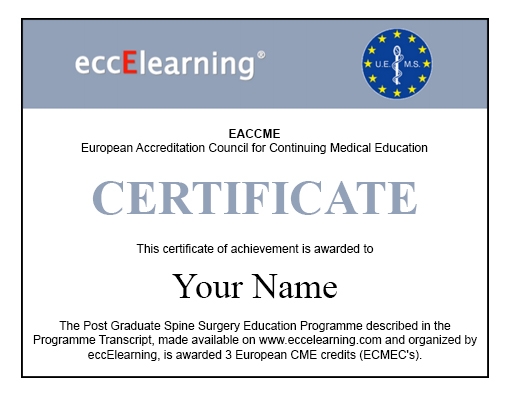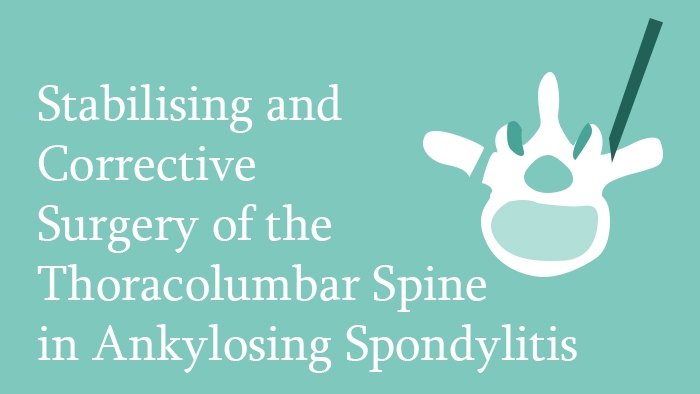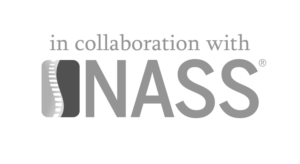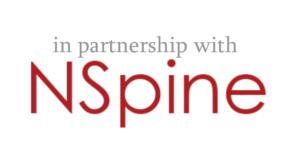Stabilising and Corrective Surgery of the Thoracolumbar Spine in Ankylosing Spondylitis
In this spine surgery lecture, principles of stabilising and corrective surgery of the thoracolumbar spine in ankylosing spondylitis are introduced.
Enrol to View This Lecture
Access to all 180 Spine Lectures with our Spine Surgery Education Programme.
Lecturer: Marcin Czyz, MD
Includes:
- Online Lecture Presentation
- Pre- and Post- Learning Assessments
- Additional Learning Materials (Standard Package only)
- Up to 3 CME Credits
DOI: 10.28962/01.3.148
Ref.ID: 8_10_czyz
What you will cover in this lecture
This spine surgery lecture, covers stabilising and corrective surgery of the thoracolumbar spine in ankylosing spondylitis.
The majority of ankylosing spondylitis (AS) patients with spinal issues are middle-aged or elderly males. AS affects not only the spine; patients are challenging to manage from the medical and anaesthesiological point of view.
Spinal fractures are usually localised in the cervical spine, with 10% in the thoracolumbar. Spinal fractures may result from even minor trauma and carry an extremely high risk of neurological deficits. Fractures involving both the anterior and posterior column are highly unstable – surgical treatment is indicated unless the patient is unfit for GA. Positioning on the operative table may be extremely difficult. Long posterior constructs reinforced with a cross-link are usually sufficient.
Patients managed conservatively are at high risk of developing respiratory complications. Progressive kyphotisation of the thoracic and lumbar spine significantly influences the QoL of AS patients. Surgical correction is indicated in keen, fit for GA patients who accept the high risk of complications. Correction should be focused on improving sagittal balance without impairing the patient’s horizontal gaze (aim: CBVA of 10-20°). Careful preoperative planning is essential. SPO (Smith-Petersen Osteotomy) and PSO (Pedicle Subtraction Osteotomy) can be used, providing comparable amounts of correction to the LL (~30°) with similar risks of complications, apart from aortic rupture (a potentially fatal complication) which is more common in SPO.
Learning Objectives
- To understand the natural history and pathomechanism of the spinal manisfestation of AS
- To be able to appreciate the challenges of surgical treatment in patients with AS
- To understand the principles of surgical treatment of spinal fractures in AS
- To obtain basic knowledge about techiques for surgical correction of spinal deformity in AS
Target Groups
Practicing Spine Surgeons
in Orthopaedic or Neurosurgical services for Continuing Education or recertification
Marcin Czyz, MD
- Consultant Spinal Neurosurgeon, Royal Orthopaedic Hospital, Birmingham, UK
- Advisory Board, European Spine Journal
eccElearning Participation
Editor
Module 7 Spinal Tumours
Author
Diagnosis and Management of Osteoid Osteoma of the Spine
Diagnosis and management of Eosinophilic Granuloma of the spine
Stabilising and Corrective Surgery of the Thoracolumbar Spine in Ankylosing Spondylitis
Diagnosis and treatment of instability of the occipito-atlantoaxial spine in Rheumatoid Arthritis
Lecture Presentation
Stabilising and Corrective Surgery of the Thoracolumbar Spine in Ankylosing Spondylitis
Includes:
- Online Lecture Presentation
- Pre- and Post- Learning Assessments
- Additional Learning Materials (Standard Package only)
- Up to 3 CME Credits

Enrol to View This Lecture
Access to all 180 Spine Lectures with our Spine Surgery Education Programme.
Frequently Asked Questions
Q: What is an eccElearning Lecture like?
A: Each Lecture includes the Lecture Presentation, Additional Learning Resources, Pre-Learning Quiz and Lecture Assessment.
Each Spine Surgery Lecture is viewed online in video format and lasts from 20-45 minutes. The Lectures contain relevant additional learning resources (book chapters, research papers, surgical videos, master lecture videos, case reports, review articles, etc.), which are presented in context and viewable immediately for your convenience.
Lecture 5.1 is an invited Master Lecture and does not include the Quiz and Assessment components.
Q: How much time will a Lecture take?
A: Lecture presentations typically take 20-45 minutes to run. However, candidates are required to review the compulsory and recommended additional learning resources contained within the Lecture. The time taken to view the Lecture and review the additional resources is in the range 3-4 hours per Lecture.
Q: What kind of credits do I get from the Lecture?
A: Each Spine Surgery Lecture can confer up to 3 Continuing Medical Education (CME) credits, certified by European Accreditation Council for Continuing Medical Education (EACCME). The CME credits are awarded to the candidate on successful completion of the online Lecture. The number awarded depend on the number of additional learning materials available in a Lecture - premium versions of the Diploma and Modules include more material for each lecture, so confer more CME Credits.
Q: What payment methods are accepted?
A: All major credit and debit cards.
Q: What are CME Credits?
A: CME stands for Continuing Medical Education. You are awarded CME Credits for undertaking an approved course of medical education. Each Lecture that you complete successfully adds to your CME Credits total. All Lectures provided by eccElearning are accredited by the European Accreditation Council for Continuing Medical Education (EACCME), of the Union Européenne des Médecins Spécialistes (UEMS). You can print out your Certificate of CME Credits after the completion of any Course or Lecture.
Q: What do I do if I fail a Lecture Assessment?
A: You are permitted to retake a Lecture Assessment up to two times. The Lecture Assessment will be made available to you again 14 days after a failed attempt. If you’ve failed the Lecture Assessment three times, please get in contact with us to discuss your options.
Q: What courses does eccElearning provide?
A: We have the Diploma in Spine Surgery with Modules individually purchasable, and Spine Surgery Specialist Certificates in Radiology and Physiotherapy.









